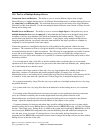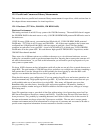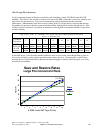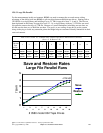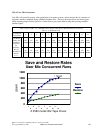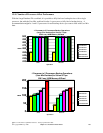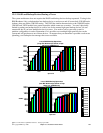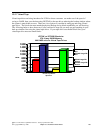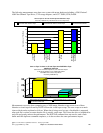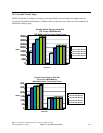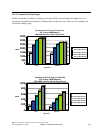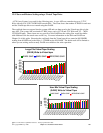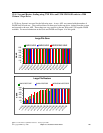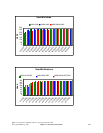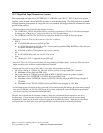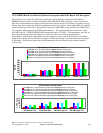
The following measurements were done on a system with newer hardware including a 3580 Ultrium 3
4Gb Fiber Channel Tape Drive, 571E storage adapters, and 4327 70GB (U320) DASD.
Measurements were also done comparing save of 1000 empty libraries to tape versus save of these
libraries to virtual tape followed by DUPTAP from the virtual tape to tape. The save to tape was much
slower which can be explained as follows. When data is being saved to tape, a flush buffer is requested
after each file is written to ensure that the file is actually on the tape. This forces the drive to backhitch for
each file and greatly reduces the performance. The DUPTAP command does not need to send a flush
buffer until the duplicate command completes, so it does not have the same performance impact.
IBM i 6.1 Performance Capabilities Reference - January/April 2008
© Copyright IBM Corp. 2008 Chapter 15. Save/Restore Performance 256
0
0.5
1
1.5
2
2.5
3
3.5
4
Hours to Save 1 TB of Data
Large File
Save to Tape
Large File
Save to Virtual
Tape then
DUPTAP
User Mix Save
to Tape
User Mix Save
to Virtual Tape
then DUPTAP
Save to Tape Vs. Save to Virtual Tape then DUPTAP to Tap
e
570, 8 Way, 96GB Memory, 305 DASD units for Virtual Tape Drives
Restricted State Save to Tape Restricted State Save to Virtual Tape Non Restricted DUPTAP
0
10
20
30
Minutes to Save Data
Save to Tape Save to Virtual Tape then DUPTAP
Save to Tape Vs. Save to Virtual Tape then DUPTAP to Tape
1000 Empty Libraries
3580 Ultrium 3 4Gb Fiber Tape Drive, 5761 4Gb Fiber Adapter
571E Storage Adapters, 4327 70GB (U320) DASD
305 DASD units for Virtual Tape Drives
570, 8 Way, 96GB Memory
Restricted State Save to Tape Restricted State Save to Virtual Tape
Non Restricted DUPTAP



